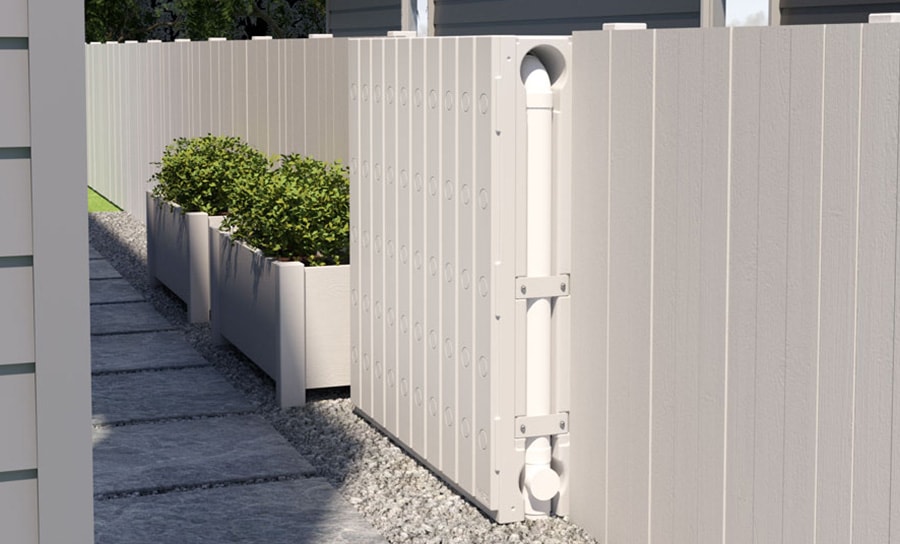High-grade Slimline Water Tanks: Reliable and Space-Efficient Solutions
High-grade Slimline Water Tanks: Reliable and Space-Efficient Solutions
Blog Article
Discovering the Different Uses Rain Storage Tanks for Residential and Commercial Qualities
As the international concentrate on sustainable living methods remains to magnify, the utilization of rain containers in both household and business settings has actually become a relevant service. These tanks provide a tank for rain harvesting, offering a myriad of prospective applications that prolong far beyond simple storage. From watering to toilet flushing and landscape design, the convenience of rain tanks is huge. Their integration into business residential or commercial properties opens up a world of possibilities for eco conscious organizations. The complex uses rain tanks provide a compelling situation for their fostering, not just as a practical water-saving measure but also as a testament to liable source administration.
Benefits of Using Rain Storage Tanks
Using rain storage tanks offers countless benefits for both families and areas in regards to water preservation and sustainability. Among the crucial benefits of using rain containers is the considerable reduction in reliance on keys water - Slimline water tanks. By recording and storing rain for later use, individuals and neighborhoods can reduce their demand for cured water, ultimately easing the concern on water treatment centers and decreasing power consumption related to water transport and therapy
Moreover, rain gathering through tanks offers a reputable alternative water resource throughout times of water constraints or shortages. This saved rain can be made use of for different non-potable functions such as irrigation, purging bathrooms, and cleaning garments, reducing the stress on conventional water resources. In addition, making use of rainwater storage tanks can lead to cost savings for both houses and areas by decreasing water costs and decreasing the requirement for expensive infrastructure developments to satisfy growing water needs.
In significance, the application of rainwater containers uses a sustainable and environmentally friendly approach to water administration, benefiting both private users and the more comprehensive neighborhood in regards to water preservation, cost-efficiency, and strength.
Rainwater Tank Usage in Irrigation
Offered the advantages of rain tanks in conserving water sources and reducing reliance on keys water supply, a substantial application hinges on using kept rainwater for watering functions - Slimline water tanks. Rain gathering systems can effectively accumulate and store rainwater, providing a sustainable water source for sprinkling yards, yards, and farming fields. By utilizing rain for watering, homeowner can minimize their reliance on treated water sources, resulting in cost financial savings and environmental advantages

One of the primary benefits of utilizing rainwater for watering is its purity. Rainwater is naturally soft and free from the chemicals and additives commonly located in keys water, making it suitable for nourishing plants without the risk of damaging impacts. Additionally, rain is at ambient temperature level, which can benefit plant development by avoiding home temperature level shocks that can take place with cold keys water.
Rainwater Storage Tanks for Bathroom Flushing

Executing rain containers for toilet flushing is an economical and environmentally pleasant method that can be easily incorporated into both property and industrial buildings. The saved rainwater can be utilized to flush toilets by connecting the tank to the existing plumbing system. This simple yet reliable solution can substantially lower water usage in a structure, particularly Our site in locations where water scarcity is a problem.

Including Rainwater Storage Tanks in Landscaping
These tanks can capture and save rain runoff from roofing systems, which can then be utilized for watering yards, grass, and plants. By using rainwater for watering objectives, home owners can reduce their dependence on local water resources, leading to set you back financial savings and conservation of valuable water sources.
In enhancement to offering a lasting water source for landscape design demands, rainwater containers can likewise assist in taking care of stormwater drainage. By capturing rain that would certainly otherwise stream right into storm drains pipes, these containers can reduce erosion, lower flooding dangers, and protect against pollution of all-natural water bodies. Moreover, including rainwater tanks in landscaping can contribute to the overall visual charm of the building, showcasing a dedication to environmental stewardship.
Industrial Applications of Rain Containers
Using rain containers in industrial setups provides a lasting solution for water monitoring and preservation, benefiting services and the atmosphere alike. One essential business usage is for irrigation functions, where collected rain can be made use of to water landscape design, yards, and farming fields surrounding business homes.
In addition, rain gathered in storage tanks can be dealt with and used for non-potable functions within business residential or commercial properties, such as flushing toilets, cleaning, and cooling down systems. Generally, the unification of rain storage tanks in commercial settings offers a sensible and environmentally accountable technique to water monitoring.
Conclusion
From irrigation to commode flushing and landscape design, the use of rain containers can aid preserve water sources and minimize water expenses. Generally, the versatility and sustainability of rain tanks make them a beneficial financial investment for any type of building proprietor looking to increase water performance.
Report this page